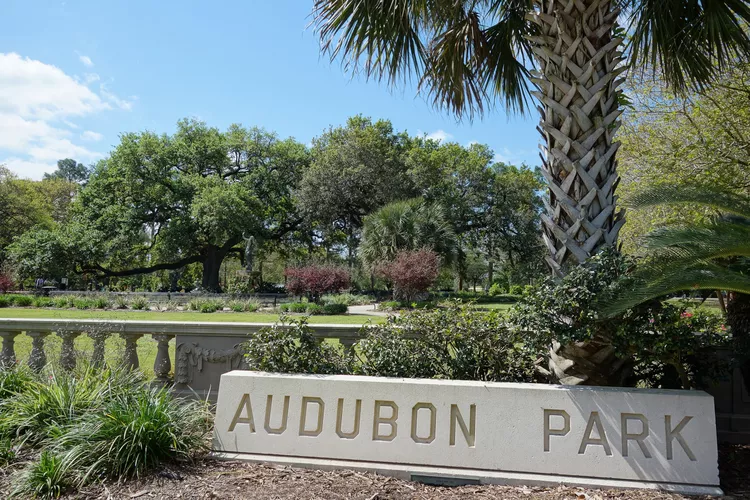Discover Audubon Park in New Orleans
6500 Magazine St, New Orleans, LA 70118-4848, USA
Phone +1 504-861-2537
Miles away from the chaos of New Orleans’ French Quarter, Audubon Park awaits those in search of a more tranquil experience. Covering approximately 350 acres, the park’s layout was designed by John Charles Olmsted of the renowned Olmsted family, celebrated for crafting public spaces like Central Park.
The park is named after the Haitian-born ornithologist John James Audubon, author of the esteemed catalogue “The Birds of America.” This catalogue may enhance your visit as the park is home to numerous native bird species resting amidst the majestic ancient live oak trees.
Furthermore, Audubon Park houses Louisiana’s famous Audubon Zoo, established in 1914, providing a public haven for joggers and bikers alike.
Location
Situated in the Uptown district of New Orleans, Audubon Park is just six miles to the west of the French Quarter. The northernmost limits of the park begin on St Charles Avenue, bordered by the prestigious Loyola University and Tulane University.
The park runs parallel to Walnut Street on its western side and Calhoun Street to its east. Its southern borders meet the banks of the Mississippi River. Visitors traveling from the French Quarter can take the Number 11 bus from Canal and Magazine, alighting at any of the five bus stops throughout the park on Magazine Street. Alternatively, those wishing to start at the park’s north end can opt for the Number 12 Streetcar, which stops along St Charles Avenue starting in the French Quarter.
History
While formally purchased by the government in 1871, this land was originally utilized for sugar production, known as Plantation de Boré. The area also played a significant role during the American Civil War, switching from Confederate to Union control and serving as a base for the 9th Cavalry Regiment of the US Army.
The park witnessed its first major event during the early 1880s when New Orleans was selected to host the 1884 World Cotton Centennial. Despite a rocky start marked by budget embezzlement by Louisiana state treasurer Edward Burke, who fled to Honduras, the fair ultimately proved successful.
After the fair, the city established a council to oversee the park’s development, hiring John Charles Olmsted to revitalize the previously unmanaged swamp. In 1914, Louisiana’s State Act #191 established the Audubon Commission, a board tasked with overseeing all developments within the park, which continues to influence major decisions regarding the park’s future developments today.

Activities at Audubon Park
A plethora of activities can be enjoyed at Audubon Park, and one of the easiest is to stroll along the Audubon Park Trail. Encircling the northern half of the park, visitors can bike, jog, or walk among the ancient oak trees while children can play at the twin playgrounds located at the park’s two northernmost corners.
Highlights along the Audubon Park Trail include the World War I Louisiana Roll of Honor, a monument honoring state natives who lost their lives in the war, and Gumbel Fountain, which serves as a picturesque centerpiece at the park’s northern entrance.
Golf enthusiasts can also enjoy the Audubon Park Golf Course, an 18-hole course that stretches over 4,000 yards. Designed by notable landscape architect Denis Griffiths, the course features regular tournaments, a pro shop, and a public clubhouse.
Directly south of the golf course lies the Audubon Zoo, home to over 2,000 animals from around the globe including elephants, tigers, and gorillas. An exciting attraction of the zoo is the open-air swamp exhibit showcasing native southern Louisiana species like otters, raccoons, and both copperhead and cottonmouth snakes.
The zoo also hosts a collection of leucistic alligators, which are distinguished by their pale white skin and blue eyes. The New Orleans Aquarium and Insectarium, affiliated with the Audubon Nature Institute, are conveniently located at the edge of the French Quarter.
Additionally, other attractions neighboring the zoo include the Whitney Young Swimming Pool and the Tree of Life, an impressive gnarled oak tree that’s centuries old and a favorite spot for wedding photos. For those looking to relax near the Mississippi River, the Butterfly Riverview Park offers numerous picnic spots.
Nature at Audubon Park
While the Audubon Zoo attracts large crowds each year, many may not realize the rich biodiversity present beyond the zoo’s boundaries. A significant rookery for wading bird species is located in the eastern lagoon of the park, aptly named Bird Island. Egrets, ibises, herons, and ducks make this island their home as breeding populations return annually to raise their young.
Additionally, the park is rich in live oak trees, a characteristic of both Audubon Park and City Park, which are carefully monitored and maintained by park staff.
Where to Eat Nearby
After a long day enjoying park activities, visitors can find a variety of dining options nearby. Audubon Clubhouse Café, located within the Audubon Park Golf Course, welcomes both members and the public.
Zoo guests can select from several restaurants including Zoofari Café, which offers traditional dining options like chicken strips and cheeseburgers, or Cypress Knee Café, known for its classic New Orleans dishes such as gumbo and étouffée.
For those willing to venture slightly further outside the park, Patois, an upscale restaurant serving Louisiana cuisine with a French twist, or Tartine, a café offering delightful sandwiches and pastries, provide excellent options for a meal.





